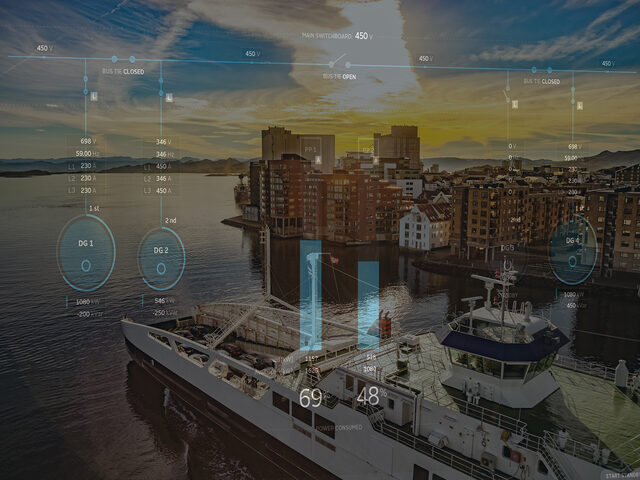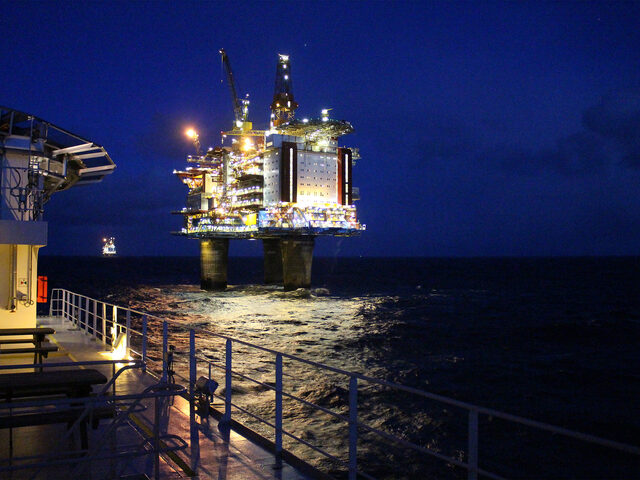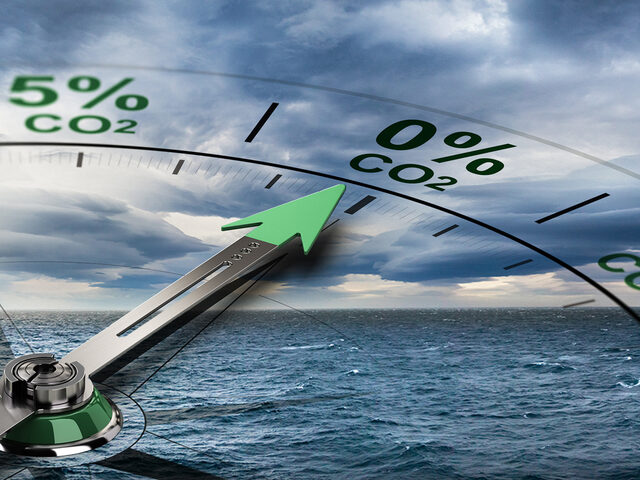Conscious carbon steps
The shipping industry is transitioning towards reduced emissions and improved energy efficiency. Whether integrated into a novel design, or retrofitted, a solution supporting the transition should be the best compromise between operational needs, the most environmentally friendly solution, cost, and benefit.
Available energy sources and technologies represent challenges and opportunities for ship owning companies. Ulstein operates in several aspects in reducing the carbon footprint of vessels
Conducting studies
Carbon emissions must be cut significantly in the years to come, and this includes emissions created by the shipping industry. Most of the emissions created by this industry originate from the fuel consumption from vessel operations. For all vessel types, it is important to understand and evaluate the operational aspects of the vessel versus the consequences of the choice of fuel types.
Energy-efficient design has always been at the core of Ulstein, and recent developments have increased the value of this focus, as alternative fuels, and novel technologies for use of such fuels, are becoming more relevant parts of the solution; The more energy efficient a vessel can be, the better the basis is provided for further improvement by alternative fuels and technologies.
Our multidisciplinary concept design teams are capable of in-depth studies to explore, develop and define systems and technical solutions onboard vessels.
Typically, our concept design teams include the design disciplines naval architecture, hydrodynamics, stability, electrical and machinery systems and structural design. Such teams, in close cooperation with mission equipment vendors and owner’s and mission process operator’s representatives, enable discussions not only on the technical solutions but also how to meet performance and safety objectives for the ship operations.
The outcome of such studies can range from concluding on the one single most suitable solution to forming a strategy or even a road map on to which level technical preparations should be performed for future upgrades. Flexibility for a vessel to operate on a variety of different fuel types, and which technology is required to enable such operations, is currently one key feature to consider.
Energy utilisation
For energy utilisation, we look at efficient hull and propulsion systems.
Hull
A fuel-efficient hull should be a proper baseline for efficiency. It must be optimised for the customer’s requirements by in-house CFD analysis and verified by model tank tests. We collaborate with suppliers with regards to flow aligned appendage design, wake adapted propulsion and model test facilities.
Ulstein hybrid propulsion concept
The «Ulstein hybrid propulsion concept», nominated for the Green Ship Technology Award in 2011, combines higher efficiency and better performance at high loads and excellent fuel consumption at low loads. Hybrid propulsion is, therefore, the perfect match for the operational profile of AHTS vessels like the Olympic Zeus and the Olympic Hera. The system takes up less space and is less expensive than a large diesel-electric system.
"After a number of jobs, we've proven to the market that we in average can run the ship on 70% of the fuel of what a conventional diesel anchor handler can and that we can save up to 70% in some modes compared to a conventional ship", said Olympic Subsea's chief technical officer Runar Stave.
Direct drive electric propulsion
Direct-drive electric propulsion will eliminate the need for a gearbox and will reduce mechanical losses, leading to a reduction of fuel and CO2 emissions.
Further improvement is possible by the use of a permanent magnet propulsion motor, which leads to increased power density, no copper losses in the rotor, improved energy efficiency and a major annual reduction of fuel and CO2 emissions. It causes low noise levels and load/rpm.
Additionally, the choice of a rudder bulb system will lead to improved propulsive efficiency and manoeuvrability, and a large annual reduction of fuel consumption and emissions. There is also a potential reduction in required brake power.
Energy recovery
For energy recovery, we primarily study the balance between available excess of and demand for thermal energy. This balance is varying over time. To harvest the excess energy and make it available where the demand is, it is necessary to engineer functionality into an energy recovery system.
Typically, we harvest from the exhaust gas, HT cooling water and LT cooling water. Since the balance of demand and supply might be a challenge, selecting the most beneficial technologies for maximum utilization are important. Technologies might include direct heating/cooling, thermal storage, heat pumps, heat to cooling(absorption cooling) and heat to power.
Ship auxiliary systems
Auxiliary systems count in energy efficiency. One example is chilled water compressors, where centrifugal compressors with variable rpm can lead to an improvement of COP (Coefficient Of Power) by approx. 80% at part load. Also, evaporators, which use recovered heat as an energy source, can produce freshwater as well as re-using water for technical purposes.
Rack cooling systems can be combined with variable speed pumps and a chilled water coil in rack cooling systems directly cooled by seawater. As for frequency converters, the variable speed electric motors are used to match variations in load demand on main propulsion and thrusters, seawater cooling pumps, engine room fans, central and local AC units.
Extensive use of LED lighting, used in floodlights and in general lighting in accommodation and technical areas, can reduce fuel consumption and CO2 emissions.
An alternative energy source can be solar energy, which has a huge potential depending on the available area or size of the ship, as well as geographical location. Solar energy should preferably be combined with batteries.
Batteries - for peak shaving, spinning reserve and power regeneration
Often, batteries are implemented as part of a hybrid solution. Battery systems can store recovered energy and solar energy. They can supply energy when peak loads occur in ship operations, otherwise being handled by the increased use of diesel engines. Peak shaving means that an energy storage system supports fast load fluctuations on behalf of a large power generator set. Spinning reserve means that an energy storage system acts as a standby power and energy source, reducing the required minimum number of online power generator sets. Power regeneration, or energy recapture, can be gained for example from crane operations.
The time delay which occurs when starting up a diesel engine is diminished when using power from a battery pack. The battery charges when there is power available and is ready to deliver energy instantly whenever needed. The use of batteries leads to reduced fuel consumption and emissions, while reduced use of the engine leads to lowered maintenance and service costs.
The efficiency gain is depending on the system design. The planning of the system requires a thorough understanding of the vessel’s technical system and operational profile.
Feasibility studies
Ulstein carries out multiple studies, one of which is feasibility studies. A feasibility study provides insight for selecting the best solution towards CAPEX, OPEX and environmental impact.
See an example of how Ulstein carries out an energy storage feasibility study.Ulstein can be your partner to reduce your vessels’ carbon footprint
Please contact us for more information
Companies
-
Ulstein International AS
P. O. Box 158,
Tel: +47 7000 8000
NO-6067 Ulsteinvik
Norway -
Ulstein Design & Solutions AS
P. O. Box 278,
Tel: +47 7000 8000
NO-6067 Ulsteinvik
Norway -
Ulstein Design & Solutions B.V.
Cornerstone Building (6th floor)
Tel: +31 10 475 00 11
Rotterdam Airportplein 32
3045 AP Rotterdam
The Netherlands




